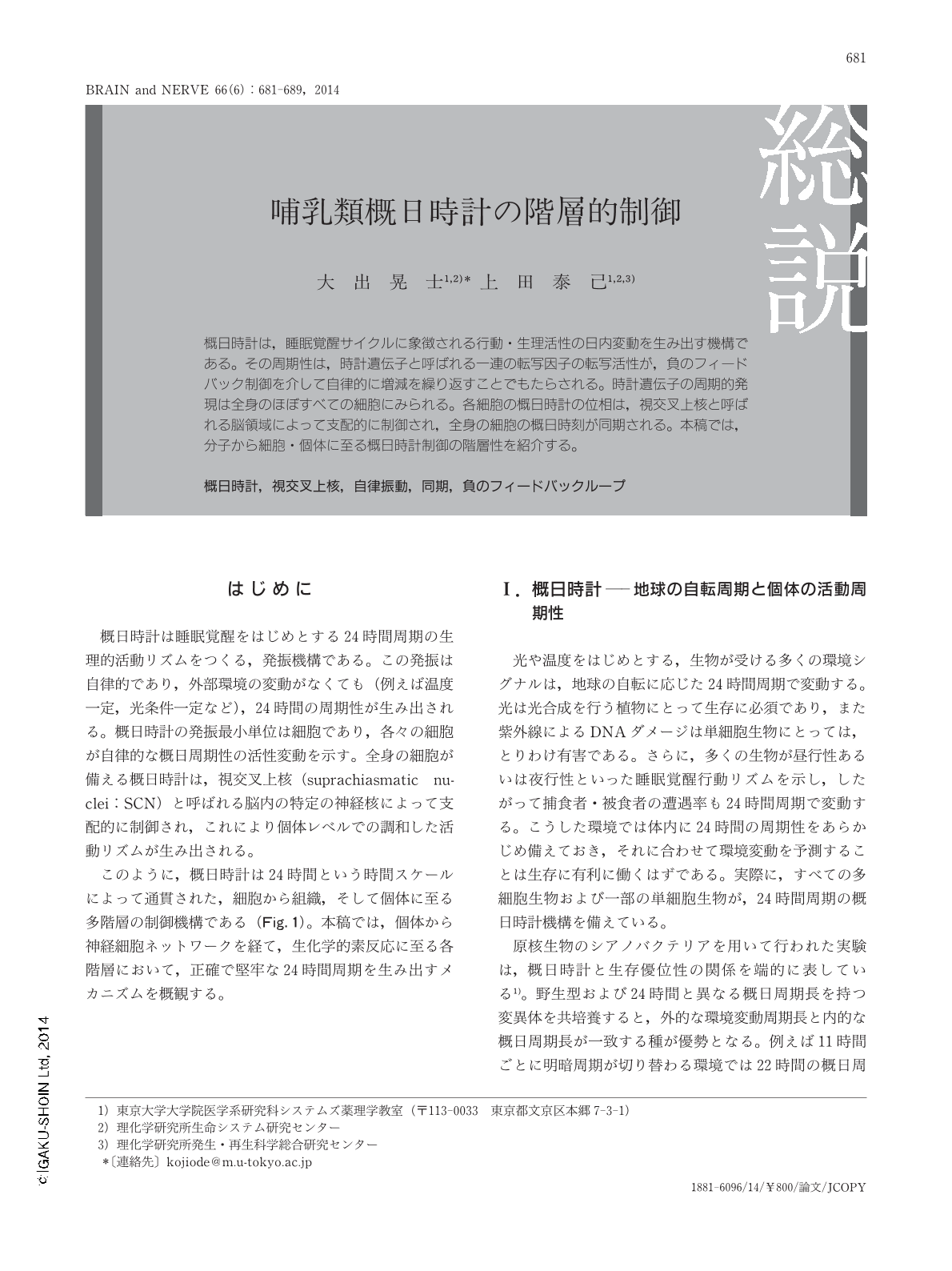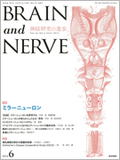Japanese
English
- 有料閲覧
- Abstract 文献概要
- 1ページ目 Look Inside
- 参考文献 Reference
概日時計は,睡眠覚醒サイクルに象徴される行動・生理活性の日内変動を生み出す機構である。その周期性は,時計遺伝子と呼ばれる一連の転写因子の転写活性が,負のフィードバック制御を介して自律的に増減を繰り返すことでもたらされる。時計遺伝子の周期的発現は全身のほぼすべての細胞にみられる。各細胞の概日時計の位相は,視交叉上核と呼ばれる脳領域によって支配的に制御され,全身の細胞の概日時刻が同期される。本稿では,分子から細胞・個体に至る概日時計制御の階層性を紹介する。
Abstract
All mammals show daily rhythms in their physiological activity, for example, sleep-wake cycles. This rhythmicity is endogenously generated by a system called the circadian clock, and is composed of reactions occurring in several neural/cellular layers of multicellular organisms.
Inter-cellular and inter-organ communication is important for the synchronous action of circadian rhythmicity across the whole body. The heart of the circadian system lies in the rhythmic neuronal activity of the suprachiasmatic nuclei (SCN) in the brain. The oscillation emerges as cell-autonomous rhythmic gene expression observed in individual SCN neurons. Inter-neuronal communication synchronizes the circadian phase of each neuron within the SCN. The integrated rhythmic SCN activity works as a pacemaker for the circadian clocks of non-SCN cells, each of which also rhythmically express clock genes.
The ~24-h period length of the circadian rhythm is predominantly determined by reactions at the molecular level. Cell-autonomous circadian oscillation is driven by a negative feedback loop of transcription regulation, where CRY/PER heterodimers act as the transcriptional repressors of their own genes. One of the rate limiting steps of circadian cycling is a phosphorylation of CRY and PER proteins followed by proteasome-mediated degradation of those proteins. Pharmacological and genetic perturbation of the phosphorylation or degradation pathways alters the circadian period length.
This review provides a hierarchical view of the circadian system, which is important to uncover the different effects of medical or social perturbations on circadian regulation of inter-cellular synchronization, or cell-autonomous oscillation.

Copyright © 2014, Igaku-Shoin Ltd. All rights reserved.


